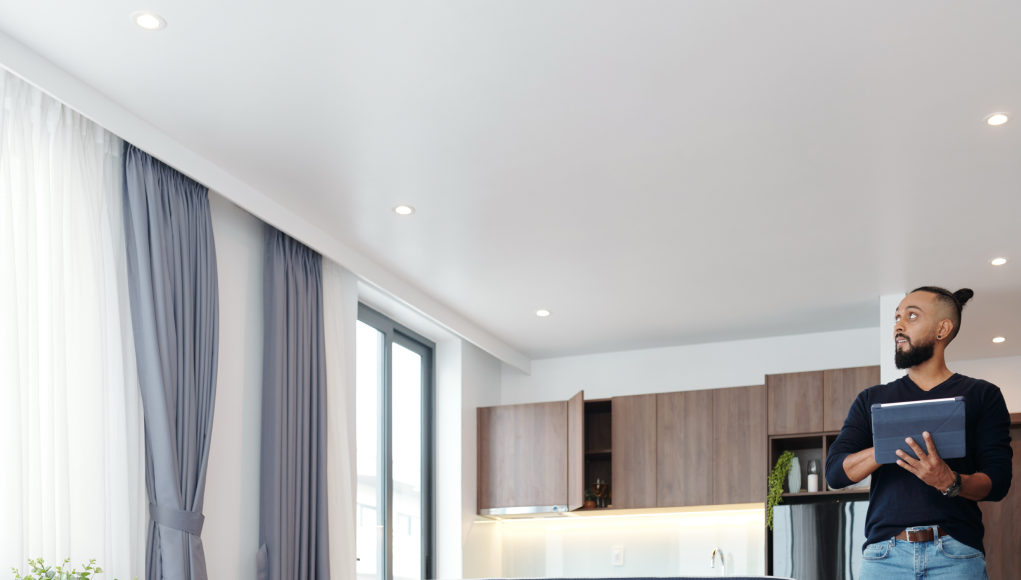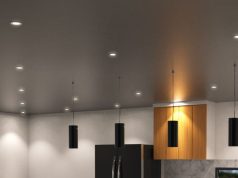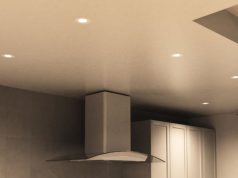Say you’ve splashed out on sleek downlights. But instead of achieving a designer showroom, you’ve got an overbright theatre or a gloomy cave. That’s because downlight spacing isn’t as simple as “stick some in and hope for the best.”
Knowing how to space downlights in a room helps ensure it will be perfectly lit. Luckily, you don’t need to be a rocket scientist to do that. Follow this guide, and you’ll have a beautifully illuminated home without turning your ceiling into Swiss cheese.
Factors That Affect Downlight Spacing
Spacing isn’t just about where the fire-rated lights should go; it’s also about how they interact with the room, the ceiling, and your questionable interior design choices. So, before you start marking up your ceiling like a detective solving a crime, consider these key factors:
Room Size
Size does matter—at least when it comes to downlights. A large room needs more lights, but that doesn’t mean you should cram them in like sardines. Space them out correctly, or risk turning your cosy living room into an over-lit shopping centre.
Light Output (Lumens)
Not all downlights are created equal. Some are warm and inviting, while others beam down like they belong in a stadium. The higher the lumens, the fewer lights you need—unless you enjoy wearing sunglasses indoors.
Ceiling Height
Think about how far your light has to travel. Standard ceiling heights (around 2.4m) work well with lights spaced roughly 1.5m apart. If your ceiling is higher, widen the spacing to avoid hot spots of blinding brightness.
Light Beam Angle
Downlights have different beam angles, which control the area they cover. Narrow beams (25 to 30 degrees) create spotlights—excellent for dramatic effect but not for general lighting. Wider beams (60 degrees or more) spread light more evenly and prevent a room from having isolated bright patches.
General Guidelines for Downlight Spacing
Nobody wants a ceiling that looks like it’s hosting an alien invasion, nor a room so dim you need a torch to find the sofa. Here’s how to strike the perfect balance:
Standard Rule of Thumb
A simple trick is to space your downlights 1.5 times the height of the ceiling. So, if your ceiling is 2.4m high, space them about 3.6m apart. However, most people prefer slightly closer spacing for a more balanced look.
Spacing for Even Lighting
Your goal is to avoid dark patches while keeping things natural. If your room is small, don’t just dump lights in the middle—spread them towards the walls to make the space feel bigger and more open. Lighting should be welcoming, not a tactical game of “find the shadow.”
Common Mistakes
Don’t go overboard. A ceiling packed with downlights will make your space look like an airport runway. On the flip side, too few will leave you squinting in dim corners. Balance is key. Also, don’t just follow the existing wiring layout—bad placement will haunt you whenever you flip the switch.
Room-Specific Spacing Recommendations
Every room has different lighting needs, and downlight spacing should cater to its function. Here’s how far to space downlights for each space:
Living Rooms
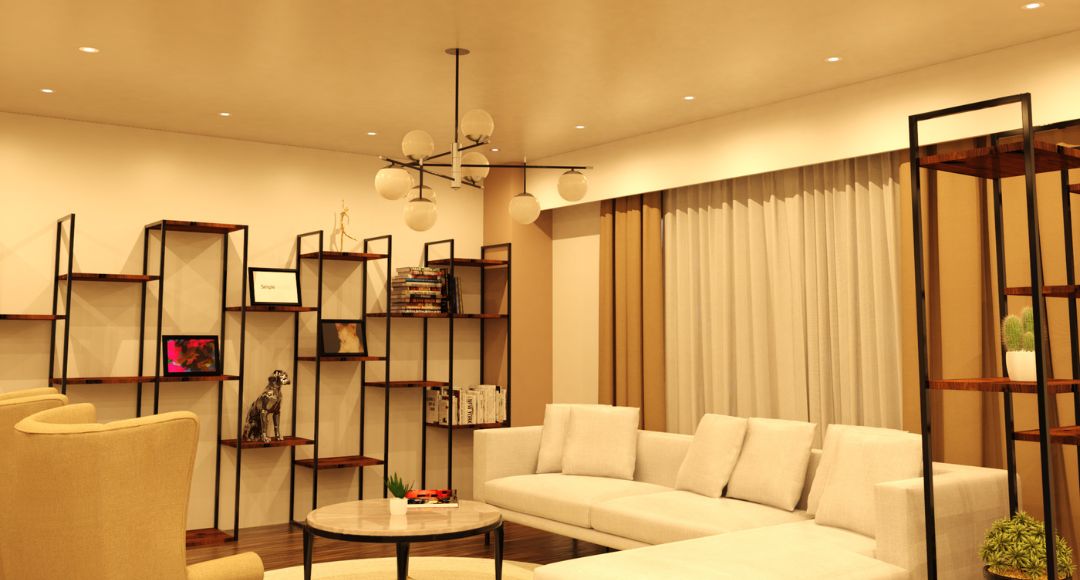
Your living room is where you relax, entertain, and sometimes nap in front of the TV. The lighting should be soft, inviting, and balanced. Space downlights about 1.5m apart to create a warm, even glow. Avoid placing them directly above seating areas unless you want your guests to feel like they’re in a police interrogation.
Kitchens
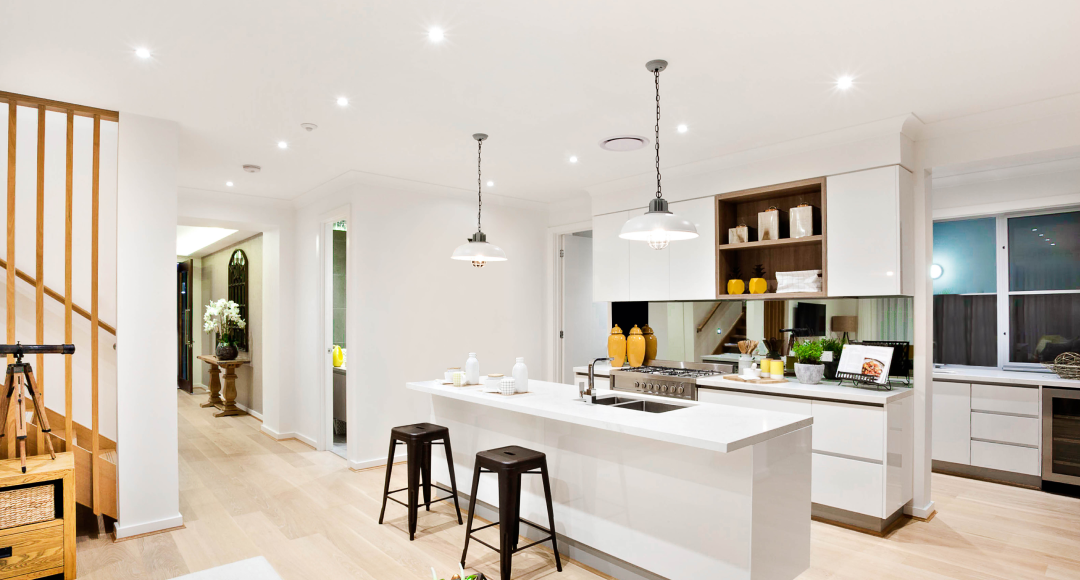
Ah, the kitchen—the heart of the home and the stage for your culinary genius (or disasters). Kitchen downlight spacing is crucial to ensure your chopping board isn’t cast in shadow. Lights should be around 1m apart, focusing on key areas like worktops and islands. If you’ve got a kitchen island, install task lighting above it so you can actually see what you’re cooking—no more mystery ingredients.
Bathrooms
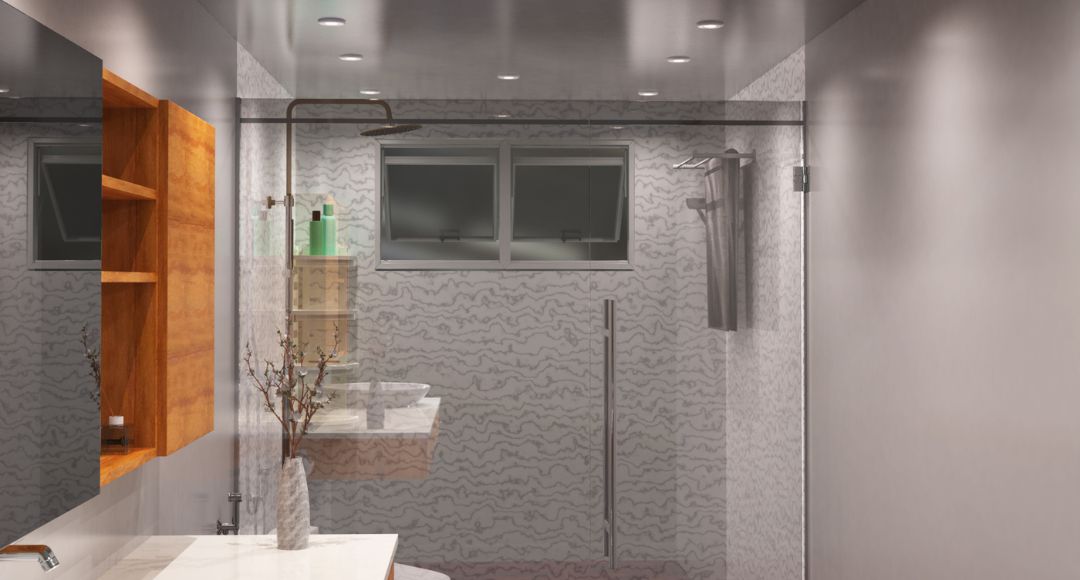
The bathroom is a place for relaxation (or hurried morning routines). Bathroom downlights should be positioned around the perimeter and near mirrors for even lighting. Spacing them around 1.2m apart should do the trick. Most importantly, make sure they’re IP-rated for water resistance, unless you fancy an unexpected shock with your morning shower.
Bedrooms
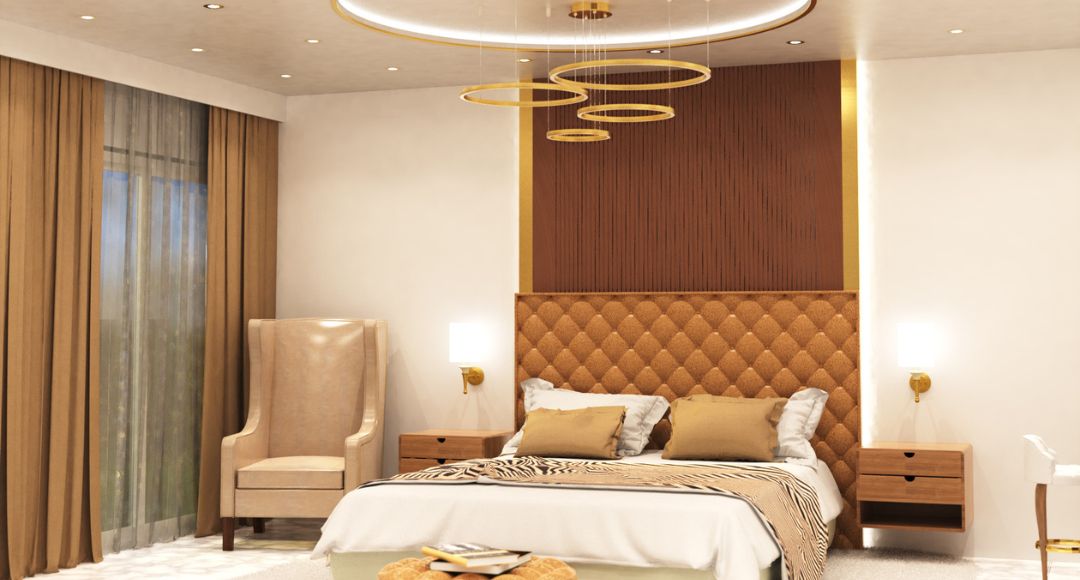
Bedrooms should have lighting that creates a calm and relaxing atmosphere. Bedroom downlight spacing should be around 1.5m apart, ensuring even light without making the room feel like an interrogation chamber. Keep them away from directly over the bed unless you enjoy being blinded while lying down. Instead, position them strategically to highlight wardrobes, dressers, and reading nooks for a balanced and cosy glow.
Hallways and Corridors
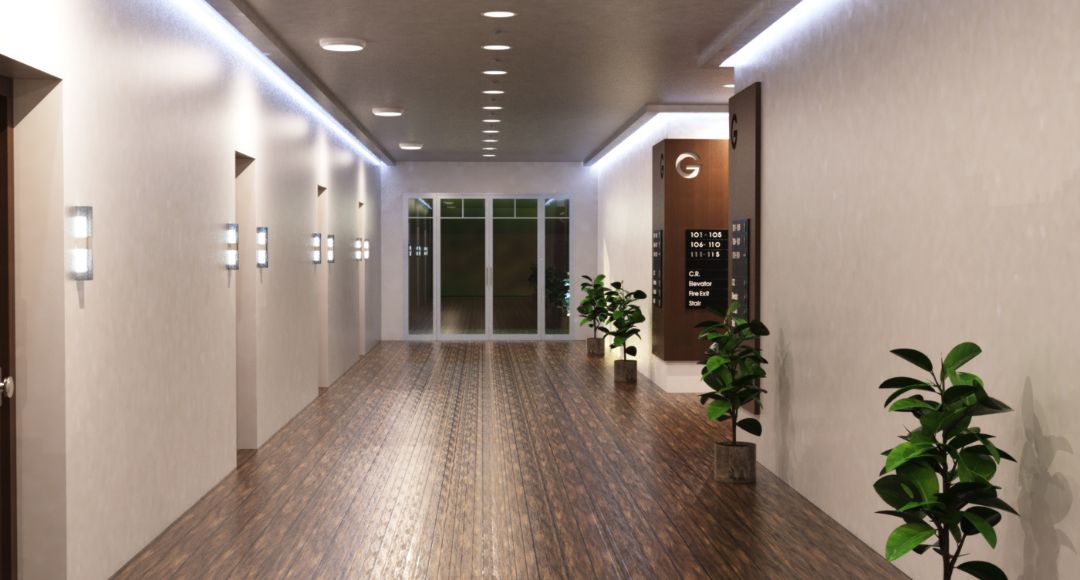
Hallways are often neglected, left either too dark or excessively bright. To keep them inviting rather than eerie, space downlights evenly at about 1.5m apart. This ensures a continuous, well-lit path without making it feel like an airport runway.
Offices and Workspaces
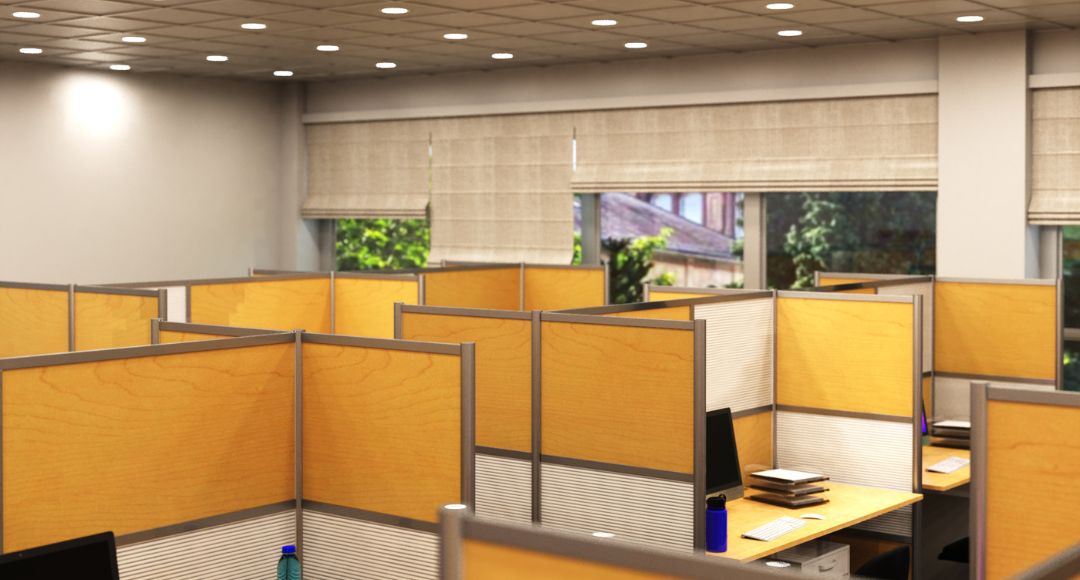
Proper lighting is essential in workspaces unless you enjoy eye strain and headaches. Space downlights closer together—around 1m apart—to maintain a bright, focused environment. Pair them with a good desk lamp to ensure optimal task lighting. And maybe throw in a dimmer switch for those dramatic late-night work sessions.
Advanced Tips for Customising Downlight Placement
If you’re ready to step up your lighting game, these pro tips will help you fine-tune your downlight placement and turn your home into a masterpiece of illumination:
Accent Lighting
Want to highlight your fancy art collection or the plant you always forget to water? Angle your downlights towards specific features instead of blasting light across the entire room. This adds depth and character, making your space feel more intentional and less like a lighting showroom.
Dimmer Switches
Sometimes, you don’t want full brightness glaring down on you. Dimmers allow you to adjust your lighting to suit the occasion—bright for working, soft for unwinding. Plus, they add a bit of sophistication (and practicality) to your space.
Smart Lighting
Why get up to flip a switch when you can control your lighting from your phone? Smart downlights let you adjust brightness, colour temperature, and even set schedules, all from an app. Whether you want a cool daylight feel in the morning or a warm, cosy glow in the evening, smart lighting has you covered.
Conclusion
By now, you should be a downlight-spacing expert—or at least well-equipped to avoid a colossal lighting disaster. Stick to the general rules, tailor your approach to each room, and don’t be afraid to get creative with accent lighting and innovative tech.
And if you want high-quality downlights without the guesswork, check out Simple Lighting. We have everything you need to achieve that perfect glow—without turning your ceiling into a constellation map of regret.


